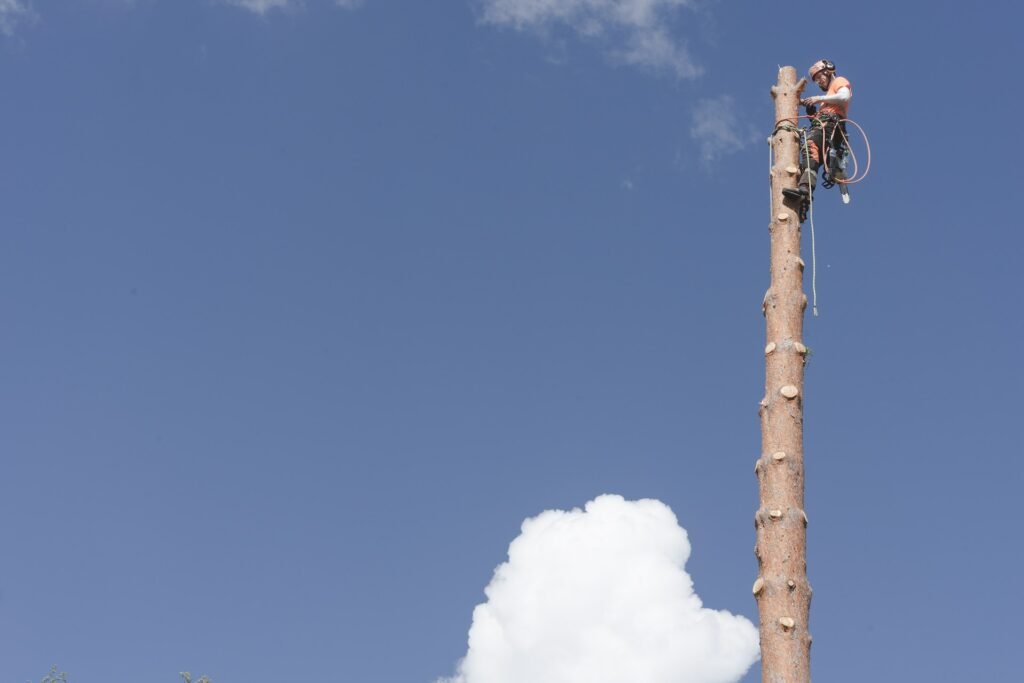Beyond Chainsaws: Unconventional Tools in the Arborist’s Kit
Arborists are often associated with the powerful and unmistakable sound of chainsaws as they trim, prune, and care for trees. However, beyond these iconic tools, the world of arboriculture is rich with a variety of unconventional tools that play a crucial role in the arborist’s kit. These tools, often lesser-known but just as vital, contribute to the arborist’s ability to care for trees with precision, safety, and a touch of innovation.

Air Spade: Excavating with Precision
One of the most intriguing tools in an arborist’s arsenal is the air spade. Unlike traditional digging methods that can damage a tree’s delicate root system, the air spade uses compressed air to excavate soil around tree roots. This innovative tool allows arborists to inspect and address root issues without causing harm, making it an invaluable asset in preserving the health of mature trees. The air spade also aids in efficient root collar excavations, exposing the critical root flare for proper assessment and care.
Bodhi Bag
Safety is paramount in arboriculture, and the bodhi bag is an unconventional yet ingenious tool designed to enhance the safety of both arborists and bystanders during tree limb removal. Acting as a cushion, the bodhi bag is strategically placed on the ground to catch falling limbs, minimizing the risk of damage or injury. This tool not only protects the tree from unnecessary wounds but also ensures a safer working environment for arborists, demonstrating the industry’s commitment to both tree care and worker safety.
Tree Radar
Understanding the internal structure of a tree is vital for effective care. Enter the tree radar—a cutting-edge tool that allows arborists to peer into the heart of a tree without making a single incision. Using radar technology, arborists can assess the internal health, detect decay, and identify potential issues within a tree’s trunk. This non-invasive method provides invaluable insights, helping arborists make informed decisions about tree preservation or removal.
Cobra Bracing System
Trees, like any living organisms, can experience structural weaknesses or vulnerabilities. To address this, arborists deploy cobra bracing systems, a unique tool designed to provide structural support to compromised limbs. The cobra bracing system involves flexible bands that mimic the natural movement of a tree, offering support without restricting growth. This innovative approach to structural reinforcement showcases the arborist’s commitment to preserving the integrity of trees while promoting their long-term health.
Tree Motion Sensors
Arborists are increasingly turning to technology to enhance their understanding of tree health, and tree motion sensors represent a fascinating development in this regard. These sensors detect subtle movements in a tree, translating them into valuable data about its overall health and structural stability. By “listening” to a tree’s movements, arborists can identify stress, disease, or mechanical issues early on, allowing for timely intervention and care.
Bark Gauge
In the medical field, vital signs provide critical information about an individual’s health. Similarly, arborists use a bark gauge to measure a tree’s vital signs. This tool assesses the thickness of a tree’s bark, offering insights into its overall health and vitality. Changes in bark thickness can indicate stress, disease, or even pest infestations, enabling arborists to tailor their care strategies to address specific concerns.
While chainsaws remain a symbol of the arborist’s trade, the world of arboriculture extends far beyond these iconic tools. Unconventional tools, such as the air spade, bodhi bag, tree radar, cobra bracing systems, tree motion sensors, and bark gauges, highlight the industry’s commitment to innovation, safety, and precision in tree care.
As arborists continue to explore new technologies and refine their techniques, these unconventional tools play a pivotal role in shaping the future of arboriculture. From preserving ancient trees to addressing modern challenges like climate change, arborists armed with these innovative tools are at the forefront of ensuring the health and longevity of our planet’s arboreal inhabitants. As we look to the future, it’s clear that the arborist’s kit is evolving, embracing technology and unconventional tools to safeguard the trees that are so integral to the health of our environment.